Several abstracts presented at this year’s American Society of Clinical Oncology (ASCO) annual meeting highlighted advances in treating newly diagnosed multiple myeloma (NDMM) and relapsed/refractory MM (RRMM). Included were several reports on bispecific antibodies (bsAbs) and combinations, as well as new data on chimeric antigen receptor (CAR) T-cell therapies—particularly its use in earlier lines of treatment for RRMM.
Researchers in Germany and Austria investigated the role of the anti-SLAMF-7 monoclonal antibody (mAb) elotuzumab in patients with NDMM in a randomized phase 3 study. Elotuzumab has demonstrated efficacy and is approved for RRMM, but its role in NDMM is unknown. Transplant-eligible NDMM patients (N=579) were randomized in a 1-to-1 ratio to receive six cycles of carfilzomib (K), lenalidomide (R) and dexamethasone (KRd) followed by four consolidation cycles of KRd and lenalidomide maintenance, all of which were given either with or without elotuzumab. Among the 574 patients who received treatment and were included in the intent-to-treat analysis, about one fourth had high-risk genetics. The coprimary outcomes of minimal residual disease (MRD) negativity and very good partial response (VGPR) or better were achieved in 49.8% of patients receiving elotuzumab plus KRd vs 35.4% of patients receiving only KRd, a significant difference (P=0.0005). Treatment-emergent adverse events (TEAEs) grade 3 or higher were slightly higher with elotuzumab (72.9% vs 62.5% in the KRd-only group). The most common adverse events (AEs) in both groups were febrile neutropenia, grade 3/4 thrombocytopenia, pneumonia, and grade 3/4 cardiac events. The researchers concluded that the addition of elotuzumab significantly improved the rate of early, deep MRD-negative remission in the frontline setting.
Investigators at Emory University found that carfilzomib, pomalidomide, dexamethasone (KPd) deepened responses in patients with high-risk NDMM (ie, presence of t[4;14], t[14;16], del17p, circulating plasma cells, or double-hit myeloma) who had achieved a partial response or better after initial treatment with autologous stem cell transplant. Patients (N=29) were treated with KPd; at study entry, 24.1% of patients had achieved a complete response (CR) or better, and 68.9% had a VGPR or better. By the end of the study, these values reached 79.3% and 100%, respectively. Of the 15 patients evaluable for MRD, MRD (10-5) and (10-6) was achieved in 80% and 53.3%, respectively. After a median follow-up of more than 2 years, the 36-month PFS was 63.2% and 36-month overall survival (OS) was 72.4%. Of the six patients who died while on the study, five died from progressive disease. TEAEs occurring in 20% or more of patients were fever (37.9%), fatigue (34.5%), grade 3/4 diarrhea (27.6%), nausea (24.1%), cough (20.7%), muscle cramps (20.1%), and acneiform rash (20.1%). About 10% of patients experienced grade 3/4 cardiac AEs, and 17.2% experienced grade 3/4 cataracts. Although responses were deepened in this high-risk population, progression-free survival (PFS) and OS remained poor, indicating that strategies for sustaining remission warrant further study.
In the RRMM setting, several studies evaluated the role of bsAbs both alone and in combination with other therapies.
In October 2022, the FDA approved teclistamab, the first bsAb (BCMA×CD3), for patients with RRMM who have received at least four prior lines of therapy including the three main classes of myeloma therapy (proteasome inhibitor [PI], immunomodulatory drug [IMiD], and anti-CD38 mAb) based on the results of the MajesTEC-1 study. Previously published results after 14 months of follow-up showed that teclistamab achieved an overall response rate (ORR) of 63%, with 39% of patients achieving a CR or better, as well as a median duration of response (DOR) of 18.4 months and a median PFS of 11.3 months.
Presented at this year’s ASCO was extended follow-up data (median follow-up: 22 months) from MajesTEC-1. Of 165 patients receiving teclistamab at the recommended phase 2 dose (RP2D; 1.5 mg/kg every week), 43% achieved a CR or better; median DOR was 24 months, with a median PFS of 12.5 months, and a median OS of 21.9 months. Hematologic AEs (any grade) included neutropenia (72%), anemia (54%), thrombocytopenia (42%), and lymphopenia (35%). Infections occurred in 78% of patients (52% grade 3/4), and nine immune effector cell-associated neurotoxicity syndrome (ICANS) events (all grade 1/2) were reported in five patients. Of the 49 patients continuing on the study, about 90% continue to receive dosing every 2 weeks. The authors suggest that the responses are deep, durable, and independent of refractory status, supporting teclistamab as a “safe and effective off-the-shelf BCMA bispecific therapy for patients with RRMM.”
Results from the phase 1/2 LINKER-MM1A study of the bsAb linvoseltamab (BCMA×CD3) in patients with RRMM were also reported at ASCO. Patients had progressed on at least three lines of therapy, including a PI, IMiD, and an anti-CD38 antibody, or were at least triple class (IMiD/PI/anti-CD38 Ab) refractory. Data published in advance of the meeting suggested that higher efficacy was observed with the 200-mg compared with the 50-mg dose, including in patients with high disease burden. The ORR for the 200-mg group (n=58) was 64% vs 50% with the 50 mg cohort (n=104). Median DOR was not reached for either cohort after median follow-up of 2.3 months for the 200-mg dose group and 4.7 months for the 50-mg dose group. A response at 6 months was seen in 89% of patients in the 200-mg group and 85% in the 50-mg group. The most common TEAEs were CRS, fatigue, and anemia. Grade ≥3 ICANS occurred in two patients in the 200-mg cohort and one patient in the 50-mg cohort. About 8% of patients in both groups discontinued treatment due to AEs. Infections occurred in 43% (Grade 3/4: 26%) in the 200-mg cohort and 59% (Grade 3/4: 31%) in the 50-mg cohort.
Another investigational bsAb, elranatamab (BCMA×CD3), is under FDA Priority Review for the treatment of patients with RRMM. A pooled analysis of 86 patients with RRMM previously treated with BCMA-directed approaches from the MagnetisMM clinical trials program found that elranatamab is safe and effective in this population. Previous BCMA-directed treatment included an antibody-drug conjugate (ADC; 67.4%), CAR T cells (41.9%), or both (9.3%). After a median follow-up of 10.3 months, ORR was 45.3% (41.4% with prior ADC and 52.8% with prior CAR T) and CR or better was achieved in 17.4% of patients. Median PFS was 4.8 months, and median OS was not reached by 10 months, with an OS rate of 60.1% at 9 months. Most common TEAEs were cytokine release syndrome (CRS; 65.1%), anemia (59.3%), neutropenia (44.2%), and thrombocytopenia (40.7%). ICANS was reported in 5.8% of patients. According to the researchers, these results support the use of elranatamab in RRMM and who have had prior exposure to BCMA-directed therapies.
A combination of two novel bsAbs, teclistamab and talquetamab, has shown promise with respect to both response rate and safety profile in RRMM. Teclistamab is the first BCMA-directed bsAb approved for the treatment of triple-class–exposed RRMM, and talquetamab is an experimental bsAb targeting the myeloma antigen G protein–coupled receptor 5D (GPRC5D×CD3). The multinational team of researchers behind the phase 1b RedirecTT-1 trial combining teclistamab and talquetamab proposed that targeting both antigens simultaneously might help overcome resistance mechanisms, such as antigen escape. The trial included 63 patients with RRMM and sought to identify the recommended phase 2 regimen (RP2R) for the combination. This was a heavily pretreated group, with patients having received a median 5 (1–11) prior treatments. Common TEAEs included CRS (81%), neutropenia (76%), and anemia (60%). One case of ICANS was reported. The ORR at the RP2R was 92% (12/13) among all evaluable patients. Of the 43% of patients who had extramedullary disease (EMD), the ORR was 83%. The researchers determined that, based on the results, this combination warrants further study in patients with high-risk EMD, for whom treatment options are currently limited.
Another study involving talquetamab (GPRC5D×CD3) evaluated this bsAb in combination with the anti-CD38 mAb daratumumab in patients previously treated with at least three lines of therapy. Preliminary results from the TRIMM-2 study showed promising efficacy for this combination, with the potential for a synergistic effect between the two agents. Updated results from 65 patients over a median follow-up of 11.5 months showed an ORR in about three fourths of the patients, with responses deepening over time. ORRs in patients exposed/refractory to prior therapy were 75%/76% for anti-CD38, 74%/64% for anti-BCMA, and 75%/75% for bsAb. At 12 months, 86% of responders, and 89% of patients with a CR or better, continued to show responses. Common AEs included CRS (78%; all grade 1/2), dysgeusia (75%), dry mouth (55%), anemia (52%), fatigue (45%), and skin exfoliation (45%). At data cutoff, 84% of responders remained on therapy, and the median PFS was 19.4 months, with 12-month PFS and OS rates of 76% and 93%, respectively. According to the researchers, the results from this steroid-sparing combination showed manageable safety and promising results in this heavily pretreated patient population, including patients refractory to anti-CD38/BCMA and T-cell redirecting therapies.
Risk of Infection With Bispecific Antibodies
Targeting BCMA and GPRC5D in RRMM with bsAbs has been associated with an increased infection risk, but this association requires further clarification. To investigate this issue, researchers followed 80 patients treated with 86 courses of bsAb therapy in early-phase clinical trials conducted between 2019 and 2022. Of the patients, 56 received BCMA bsAb,15 received GPRC5D bsAb combined with CD38 mAb with or without IMiDs, and 15 received GPRC5D bsAb monotherapy. A total of 117 infections were reported, 89 in the BCMA group, 24 in the GPRC5D combination group, and 4 in the GPRC5D monotherapy group. The infection rates were similar among patients receiving BCMA bsAb and GPRC5D bsAb, but the incidence of high-grade infections (grade ≥3) was higher with BCMA bsAb treatment (P=0.01). Grade 5 events were observed in 8% (n=7) of patients treated with BCMA bsAb compared to none treated with GPRC5D bsAb. According to the researchers, the findings suggest that the risk of infection with bsAb therapy is high in RRMM, and the risk is higher for BCMA bsAb compared to GPRC5D bsAb, with higher cumulative incidence of infection, higher-grade infection, and more infections that require hospitalization.
Another study investigated infections associated with talquetamab. In the phase 1/2 MonumenTAL-1 study, a total of 339 patients with RRMM received subcutaneous talquetamab, either once a week (n=143) or every 2 weeks (n=145); in addition, 51 had prior T-cell redirection therapy. The researchers found that new-onset infections were most likely to occur during the first two cycles of treatment. Grade 3/4 infections observed in more than two patients included pneumonia (3.5%) and urinary tract infection (2.1%) with the once weekly dose; and pneumonia (2.1%) and COVID-19 (2.1%) with the every-2-weeks dose. Among patients receiving prior T-cell redirection therapy, 6% developed pneumonia. According to the researchers, the rate of opportunistic infections was low with talquetamab, as were rates of discontinuation and deaths. Although not directly compared in this study, infection rates, particularly rates of fatal infections, appear lower with talquetamab than with BCMA-targeted T-cell–based therapies, the authors concluded.
Based on results from the CARTITUDE-1 trial, the FDA in February 2022 approved ciltacabtagene autoleucel (cilta-cel) for the treatment of adult patients with RRMM who had received at least four lines of therapy, including a PI, an IMiD, and an anti-CD38 mAb. Final results from CARTITUDE-1 were presented at this year’s ASCO. A total of 97 patients received cilta-cel over a median follow-up of 33.4 months (range, 1.5–45.2). Median DOR was 33.9 months; median PFS was 34.9 months, with an estimated 47.5% of patients maintaining response at 36 months. According to the researchers, the typical median OS in the heavily pretreated RRMM setting is only about 12 months, highlighting a substantial improvement with cilta-cel in this trial. Out of 49 patients evaluable for MRD, 26 remained MRD-negative for 12 months or more. Of those patients, 20 sustained an MRD-negative CR or better. In addition, 18 patients were MRD negative with a CR or better 24 months after infusion. Safety of cilta-cel was as expected. Overall, six new cases of second primary malignancy were reported, including two cases of basal cell carcinoma and one case each of myelodysplastic syndrome, B-cell lymphoma, melanoma, and prostate cancer. According to the researchers, the median PFS with a single infusion of cilta-cel is longer than that observed with any previously reported therapy in this setting. The ongoing CARTINUE study will follow the course of these patients over a 15-year period.
A retrospective study of data also indicated favorable outcomes for cilta-cel as standard-of-care (SOC) therapy in patients with RRMM. Overall, 177 patients from 12 US academic medical centers were leukapheresed and 139 received cilta-cel. Many patients (55%) in this analysis would have been considered ineligible to enroll in CARTITUDE-1. Of the patients, 83% received bridging chemotherapy, with an ORR of 28%. CRS (grade ≥3: 7%) developed in 81% and ICANS (grade ≥3: 8%) developed in 22% of patients. Infections were seen in 32% of patients. Best response rates, recorded in 118 patients, were partial response (PR) or better (80%); VGPR or better (62%); and CR or better (40%). The authors concluded that intended SOC with cilta-cel has a favorable ORR despite the fact that a larger proportion of patients in this analysis had high-risk features relative to CARTITUDE-1 trial patients; for example, more patients in the current study had EMD (35%) compared with the CARTITUDE-1 study (~14%).
A late-breaking abstract presenting data from the CARTITUDE-4 phase 3 trial reported that compared with SOC (pomalidomide, bortezomib, and dexamethasone [PVd] or daratumumab, pomalidomide, and dexamethasone [DPd]), a single infusion of the dual-binding BCMA-targeting CAR T-cell therapy cilta-cel was associated with a significant improvement in PFS in patients with lenalidomide-refractory MM after first relapse. CARTITUDE-4 represents the first phase 3 study designed to evaluate the efficacy and safety of CAR T-cell therapy in patients with lenalidomide-refractory MM after first relapse, including patients earlier in the course of disease and treatment than were included in previous CARTITUDE trials.
CARTITUDE-4 included 419 patients with lenalidomide-refractory MM who had received between one and three lines of therapy, including a PI and IMiD. In the cilta-cel arm (n=208), patients received bridging therapy with physician’s choice of either PVd or DPd followed by a single cilta-cel infusion 5 to 7 days after lymphodepletion. No manufacturing failures were reported. In the SOC arm, patients received either PVd (n=28) or DPd (n=183) until disease progression. During a median follow-up period of 16 months, the 12-month PFS rates were 76% versus 49% for cilta-cel and SOC, respectively (HR 0.26; P<0.0001). Cilta-cel was associated with a significantly improved ORR (P<0.0001) and an improved number of CR or greater responses (P<0.0001) compared with SOC. MRD negativity rate was also improved with cilta-cel (P<0.0001). In addition, there was a positive trend toward improved OS in the cilta-cel arm (HR=0.78). Grade 3/4 AEs occurred in 97% and 94% of patients treated in the cilta-cel or SOC arms, respectively (including infections [27% vs 25%] and cytopenias [94% vs 86%]). In the cilta-cel arm, 76% had CRS (1% grade 3; no grade 4/5), 5% had ICANS (all grade 1/2) and one patient had a grade 1 movement/neurocognitive AE.
Researchers from the Dana-Farber Cancer Institute and others presented results from a phase 1 study of PHE885, a T-charge–manufactured BCMA-directed CAR T-cell therapy in patients with RRMM. BCMA-directed CAR T-cell therapies have been approved for RRMM, though implementation in clinical practice is subject to lengthy manufacturing times and strong demand for access. According to the researchers, T-charge manufacturing can shorten manufacturing time to less than 2 days and preserve T cell stemness, resulting in rapid expansion and prolonged CAR T-cell persistence.
In the current study, PHE885 produced high response rates with no unexpected safety findings in heavily pretreated patients with RRMM. A total of 46 patients were evaluated with a range of doses of PHE885. Patients had a median of 4 (2–10) prior lines of treatment, 37% had EMD, and 96% were triple-class refractory. Although these patients had aggressive disease, only 28% required bridging therapy due to the quick production time of PHE885. CRS of any grade was noted in 96% of patients and ICANS occurred in 22% (7% grade 3). Other common treatment-related grade 3/4 AEs included anemia (54%), neutropenia (50%), and thrombocytopenia (37%). In the 43% of patients evaluable for efficacy, ORR was 98%. Of 10 evaluable patients, 6 were MRD negative at 10-5 (by next-generation sequencing).
Data from a phase 1 study of another rapid CAR T-cell therapy, GC012F, was presented by several research groups based in China. GC012F is a BCMA/CD19 dual-targeting fast CAR T-cell therapy. According to the researchers, the novel FasT CAR-T platform enables manufacturing of the treatment in 22 to 36 hours. In data previously reported by the group, GC012F led to deep and durable responses in 29 patients with RRMM. The latest data presented at ASCO included 12 months of efficacy follow-up for these patients, 90% of whom had high-risk disease (by Stratification for Myeloma and Risk-Adapted Therapy [mSMART]). ORR was 93.1% (27/29), stringent CR was 82.8% (24/29), and 89.7% achieved a VGPR or better. GC012F was still detectable in 23 patients at 6 months and in 16 patients at 12 months after infusion, with a median time of persistence of 410 days. All 29 patients achieved MRD negativity by flow cytometry (sensitivity 10-4 to 10-6). The median DOR was 37.0 months, and the median PFS was 38.0 months. Of the 29 patients, 25 had CRS of any grade, but no cases of ICANS were observed. The researchers noted that these updated results show that GC012F provides deep and durable responses along with a very high MRD negativity rate, suggesting that GC012F warrants further investigation in this setting.
Belantamab mafodotin (belamaf) is an antibody-drug conjugate that targets BCMA. In November 2022, the manufacturer of belamaf (GSK) initiated the process for withdrawing belamaf from the US market based on findings from DREAMM-3, which did not meet the requirements of the FDA Accelerated Approval regulations. Patients included in DREAMM-3 had RRMM at second relapse and were receiving third-line or later treatment. New results from the DREAMM-3 phase 3 trial in RRMM suggest that belamaf produced more durable and deeper responses compared to the comparator of pomalidomide plus low-dose dexamethasone (Pd); however, no difference was observed in PFS between the two groups. A total of 325 patients were randomized in a 2:1 ratio to receive belamaf or Pd. Over a median duration of follow-up of 11.5 months, median PFS was longer with belamaf (11.2 months vs 7.0 months), but the PFS was similar between the treatment groups (P=0.558). Belamaf appeared to induce deeper responses compared with Pd and showed a longer DOR: at 12 months, the probability of maintaining response was 0.768 with belamaf vs 0.484 with Pd. The safety profile was consistent with previous reports for belamaf and Pd. Current research efforts with respect to belamaf are focusing on its role in combination with established and novel agents.
Another study of belamaf, DREAMM-9, evaluated this agent in combination with bortezomib, lenalidomide, and dexamethasone (VRd) in a phase 1 study in patients with transplant-ineligible NDMM. Data from the updated interim analysis suggested that belamaf plus VRd had no new safety signals and provided early and deep antimyeloma responses in this setting. Patients were separated into seven different cohorts including 12 to 14 patients each. Grade ≥3 AEs occurred in 35% of patients and led to belamaf dose reductions in 7% and dose delays in 63% of all treated patients. The most commonly reported nonocular AEs across all cohorts were thrombocytopenia (46%), constipation (36%), diarrhea (34%), and peripheral sensory neuropathy (31%). Of the patients, 100% of patients in two cohorts, both at the highest dose of 1.9 mg/kg responded. Median time to VGPR or better ranged from 2.1 to 3.1 months (months) across cohorts.
——————————————————
Jointly provided by the MMRF and RedMedEd.
This educational activity is supported by educational grants from Bristol Myers Squibb and GSK.
JERUSALEM, Israel & NORWALK, Connecticut – May 16, 2023 – Nectin Therapeutics, a biotechnology company developing novel targeted immunotherapies to address tumor immune resistance, and the Myeloma Investment Fund (MIF), the Multiple Myeloma Research Foundation’s (MMRF) venture philanthropy subsidiary, today announced that the MIF has invested in Nectin Therapeutics to explore the potential of NTX1088, Nectin’s first-in-class lead immunotherapy drug candidate, for the treatment of multiple myeloma.
“We look forward to our partnership with Nectin Therapeutics to evaluate NTX1088 as a potential therapy for multiple myeloma,” said Michael Andreini, President and Chief Executive Officer of the Multiple Myeloma Research Foundation. “The MIF is committed to identifying and accelerating the most innovative treatment approaches for myeloma patients. We are pleased to support this first-in-class antibody targeting PVR based on the potential to overcome immune evasion and enhance the immune system’s response against myeloma.”
“We are delighted to join forces with the Myeloma Investment Fund, allowing us to collaborate and explore the potential of our lead candidate, NTX1088, in the treatment of multiple myeloma,” said Fabian Tenenbaum, Chief Executive Officer of Nectin. “NTX1088 is currently being studied in patients with advanced and metastatic solid tumors, and we look forward to working closely with the MIF to uncover the role that PVR blockade may serve in addressing the unmet needs of myeloma patients.”
Together with the MIF’s investment, Nectin has raised over $33M supported by investments from aMoon, Peregrine Ventures, Israel Biotech Fund, Cancer Focus Fund and Integra Holdings.
###
About Nectin Therapeutics
Nectin Therapeutics is a biotechnology company aiming to transform the lives of cancer patients by leveraging its unique insights into the nectin pathway to develop the next generation of immune oncology (IO) therapies. The company’s differentiated therapies have the potential to achieve new standards for efficacy and patient response across a number of difficult-to-treat cancers. Nectin’s technology addresses major escape mechanisms of current IO therapies through a diverse pipeline of novel monoclonal antibodies and antibody-drug-conjugates. It has a world-class scientific and management team with deep experience in oncology drug development and a successful track record in building biotechnology companies and developing innovative therapies. Nectin Therapeutics is a venture-backed, privately held company, funded by aMoon Fund, Peregrine Ventures, Israel Biotech Fund, Cancer Focus Fund, Integra Holdings and the Myeloma Investment Fund.
About NTX1088
NTX1088 is a first-in-class monoclonal antibody directed against a key immune checkpoint, PVR, also known as CD155. NTX1088 has multiple mechanisms of action. NTX1088 blocks the interaction between PVR and DNAM1, also known as CD226, a molecule involved in the activation of anti-cancer T and NK cells. By preventing internalization and degradation of DNAM1, NTX1088 leads to restoration of DNAM1 expression on the surface of immune cells and results in robust antitumor activity. NTX1088 also blocks PVR’s interactions with TIGIT and CD96, preventing their immune inhibitory signaling. NTX1088 demonstrated superior antitumor activity compared to approved and investigational immune checkpoint inhibitors in preclinical models and had a favorable safety profile in non-human primates.
About the Myeloma Investment Fund (MIF)
The Myeloma Investment Fund (MIF) is a venture philanthropy fund that invests in promising companies, clinical assets, and technologies in oncology to drive the development of new therapies for multiple myeloma. The MIF collaborates closely with portfolio companies to help them advance multiple myeloma research. This evergreen fund is supported entirely by philanthropy; all profits will be reinvested back into research for more effective treatments until there is a cure for every patient. For more information, visit www.myelomainvestmentfund.org.
About the Multiple Myeloma Research Foundation (MMRF)
The Multiple Myeloma Research Foundation (MMRF) is the largest nonprofit in the world solely focused on accelerating a cure for each and every multiple myeloma patient. We drive the development and delivery of next-generation therapies, leverage data to identify optimal and more personalized treatment approaches, and empower myeloma patients and the broader community with information and resources to extend their lives. Central to our mission is our commitment to advancing health equity so that all myeloma patients can benefit from the scientific and clinical advances we pursue. Since our inception, the MMRF has committed over $500 million for research, opened nearly 100 clinical trials, and helped bring 15+ FDA-approved therapies to market, which have tripled the life expectancy of myeloma patients. To learn more, visit www.themmrf.org.
Media Contacts:
C.J. Volpe
Multiple Myeloma Research Foundation
[email protected]
203-652-0453
Rebecca Ash
Gova10 for Nectin Therapeutics
[email protected]
+972-52-663-5075

My biggest fear when they told me I had cancer was that I was going to die and not be around to see my grandkids grow up and mature into the young people they are today. When I was diagnosed, I remember my doctor put his arm around my shoulder and said, “I could tell you to put your affairs in order, but I’m not; we can deal with this.”
While recovering from my stem cell transplant, I felt a need to get involved, create awareness of multiple myeloma, and raise money for research and hopefully a cure, so I reached out to the MMRF. I wanted to help raise money to fight this cancer, so I looked at what I like—good music, wine, and great food. From that, I started Wine & Dine in the D. Then, five years ago I founded my own charitable organization, Cure Multiple Myeloma Corp.(CMMC), which is designed to educate and assist multiple myeloma patients in Michigan. Since 2010, the charity has raised more than $1.6 million for research.
I designed this as a two-part evening that included an educational panel discussion by prominent myeloma doctors, followed by a “Wine & Dine” evening, featuring delicious food and beverages from some of Detroit’s finest restaurants.
Now in its 13th year, approximately 400 community members, patients, caregivers, and key opinion leaders in the myeloma community annually attend Wine & Dine in the D. It brings together specialists from around the country for a panel discussion and provides a platform for Metro Detroit patients and the community to learn about new groundbreaking treatments and speak directly to these leading doctors.
Once CMMC was formed, I saw an opportunity to be of further assistance to multiple myeloma patients in southeast Michigan. Patients need education about the new drug therapies available and the quickly changing myeloma landscape. I asked my doctor what he thought was needed and the Ask the Doctor series was established from that discussion. At first, they were intimate breakfasts, where patients could speak directly to a multiple myeloma specialists and also interact with other patients. Then the pandemic hit, and the breakfasts were turned into virtual discussions over Zoom. This year, they will be hybrid discussions, where doctors and patients will meet face to face, and a Zoom option will be available for those unable to attend. The price for admittance is one question per myeloma patient, but they are welcome to ask more!

The award means that all my efforts are recognized and appreciated and that my work has resulted in tangible benefits. The walk and run is somewhat new for us in Detroit. It is a wonderful opportunity for me to bring together friends, patients, and caregivers who have faced this disease to celebrate triumphs and raise much needed funds.

I think that focusing on what I can do instead of my situation has helped immensely. By concentrating on raising funds and assisting others, I have the ambition and will to keep moving forward.

I get a lot of my strength through my relationships with my doctors, Dr. Jeffrey Margolis (my oncologist) and Dr. Michael Lill (my transplant doctor). They were there for me all the way. I have also received a lot of support from my family and friends.
The Multiple Myeloma Research Foundation is delighted to recognize Sid Moss as the MMRF Spirit of Hope Honoree at the 2023 MMRF Team for Cures: Southeast Michigan Walk/Run.
This award is presented at every Walk/Run to a patient, caregiver, or family who inspires hope through their resilience, perseverance, and dedication to the MMRF and its mission.
Sid’s wife, Sharon, has set up a Team page for the Southeast Michigan Walk/Run in honor of her husband. View her page to read her story and join the Team here.
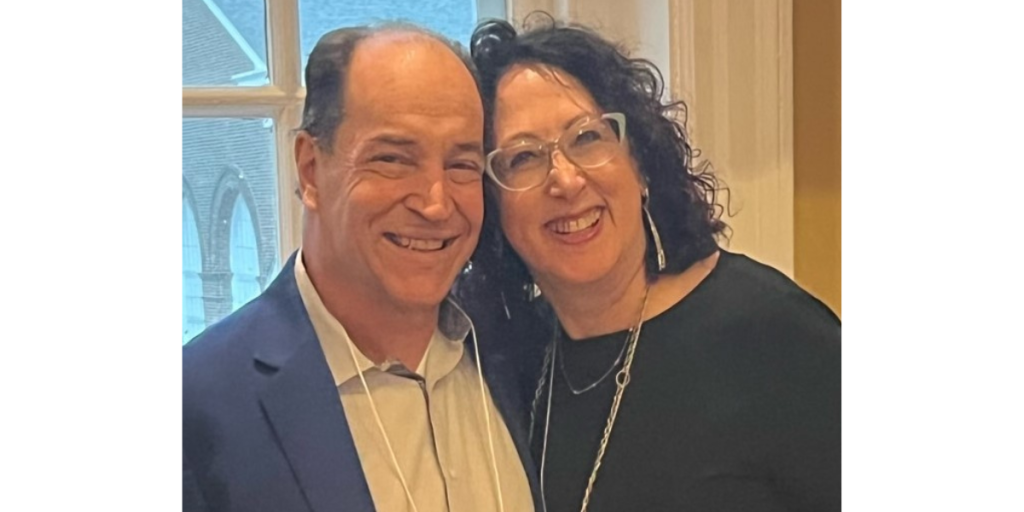
Following my Multiple Myeloma diagnosis, my children, Margaux and Adam, and his wife, Danielle, wanted to learn more about MM and wanted to find a way to make lemonade out of lemons. Upon contacting the MMRF, they learned about the Walk/Run and recognized it not only as a great way to fund additional research for finding a cure for MM but also as a way for family and friends to show support for me as I received treatment and dealt with the pain from the many spinal compression fractures caused by MM. Shortly after contacting the MMRF, they created Lester’s Legion team to participate in the walk. Participating in the Walk also provided me with an opportunity to inform others as to potential signs of MM so that they can get treatment before spinal compression fractures occur and limit their mobility.
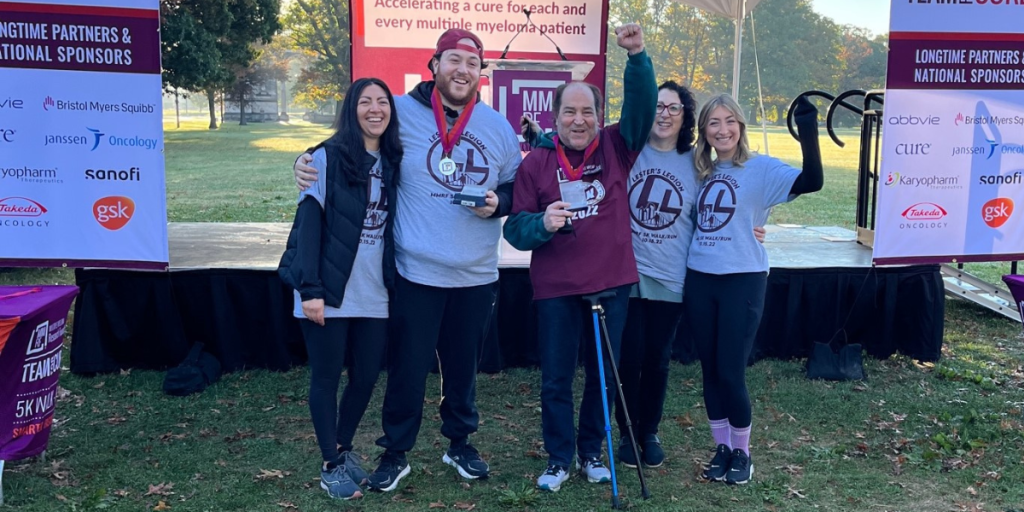
The many emails that I received from the MMRF advising me that contributions were made on behalf of Lester’s Legion were utterly amazing. So many people who learned about Lester’s Legion in emails from the MMRF, on Facebook, or by word of mouth contributed to the MMRF and later participated in the walk. As more and more people donated to the MMRF and reached out to me, it gave me strength to fight this “unexpected journey,” as it not only showed me how many people hoped to find a cure for MM but also how many were there to support me, my wife, Donna, and my children. Like all cancer treatments, the treatment for MM is a long process that is often unpleasant. The MMRF walk/run provided me with the knowledge that I had a strong support group, which is needed to provide the strength to fight this “unexpected journey.” Moreover, as I was immunocompromised from the treatment, my contact with friends and family was very limited during the treatment. Seeing all the friends/supporters of mine, my wife, and my children at the walk provided me with additional strength.
The MMRF also provided me with information as to available treatments and, most importantly, how others have dealt with the treatment and coped with the MM diagnosis. I was also lucky enough that as friends learned about my diagnosis (when they learned about MMRF Walk/Run) they advised me that they had friends/family members who had MM. This provided additional information as to what to expect and how to cope. Reaching out to others who were dealing with the same issues helped to relieve the stress of dealing with MM. The information that was provided by others as to what to expect with the eventual stem cell transplant was especially helpful and reduced my stress level before, during, and after the transplant. I know that the advice provided by the MMRF as well as other MM survivors was a factor leading to my successful stem cell transplant.
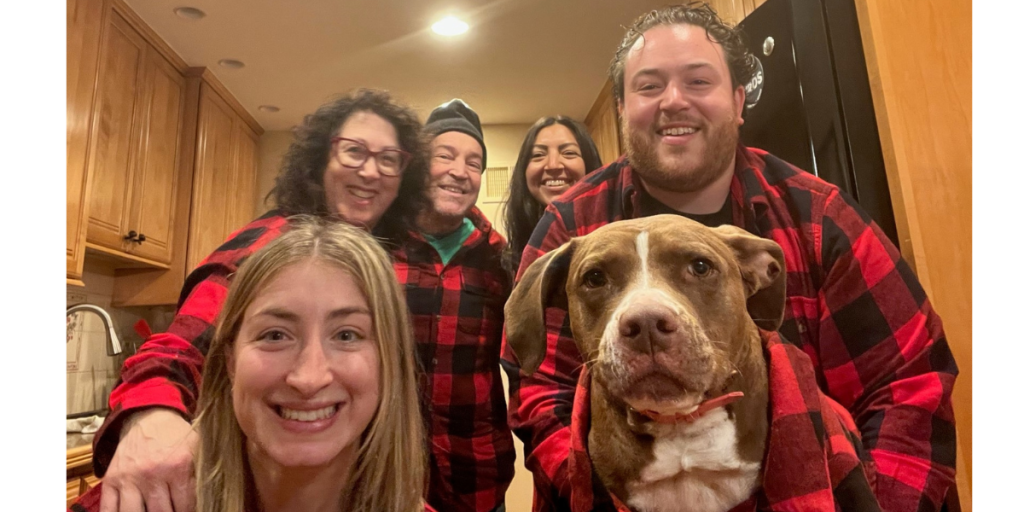
I faced the same obstacles confronted by many other MM patients—coping with the diagnosis, the side effects of the treatment, and the pain and mobility limitations from the spinal compression fractures. I was able to persevere knowing that so many friends and family were there to support me and donate to the MMRF to help find a cure for MM. I called my battle with MM my “unexpected journey.” Each time I recognized a contribution to the MMRF or an email/text from a friend/supporter, I thanked them with a note acknowledging that their “support gave me the strength to fight this ‘unexpected journey’.” Certainly, the support from family and friends gave me the emotional strength to overcome the diagnosis, the side effects, and the pain.
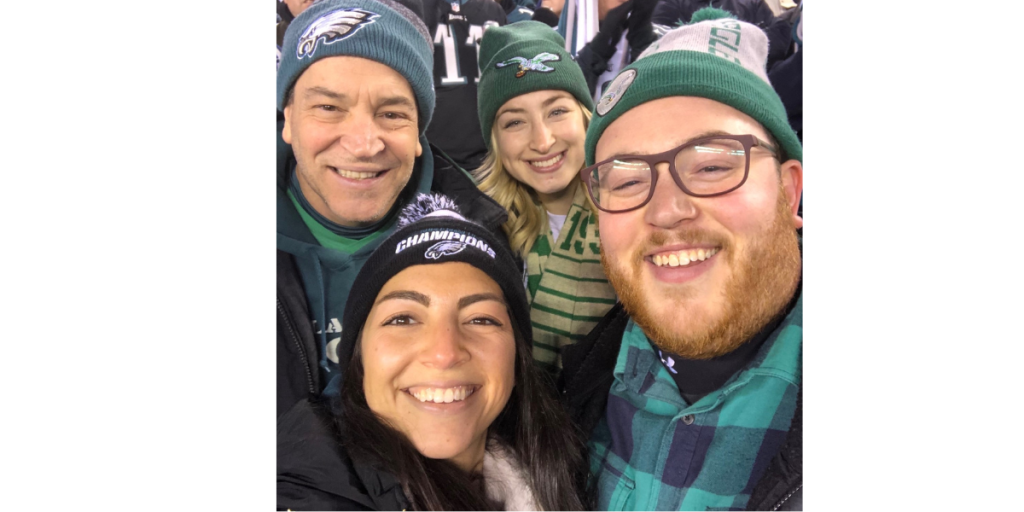
I recognize that every MM patient, as well as every cancer patient, needs a strong support group to face the diagnosis and handle the treatment plan. To me, the Spirit of Hope award represents recognition of all the people who support their friends and family who are diagnosed with MM. It is these supporters who give MM patients the Spirit and “strength to fight this ‘unexpected journey’” with the Hope of remission and eventually a cure for MM.
The Multiple Myeloma Research Foundation is delighted to recognize Lester Weinraub as the MMRF Spirit of Hope Honoree at the 2023 MMRF Team for Cures: Philadelphia Walk/Run. Donate to his team “Lester’s Legion” to accelerate a cure!
This award is presented at every Walk/Run to a patient, caregiver, or family who inspires hope through their resilience, perseverance, and dedication to the MMRF and its mission.
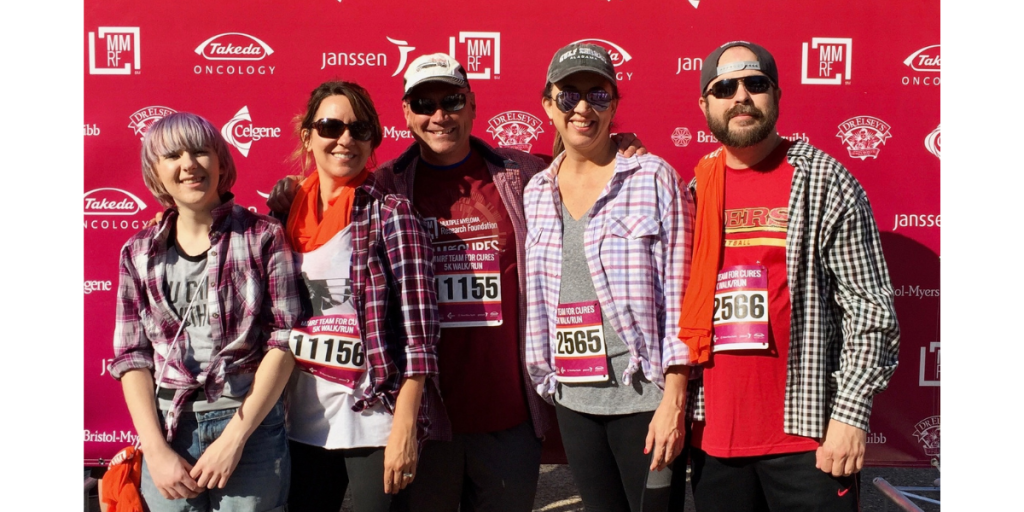
My brother Tim, his wife Melody, and their family of three kids had been involved with the MMRF since he was first diagnosed in 2009. They participated in MMRF events in the Dallas, TX area, and the rest of our family supported their activities from afar. After Tim passed away on February 11, 2022, I felt we had to do everything we could to help those with this disease and their families and to continue Tim’s fight in his honor.
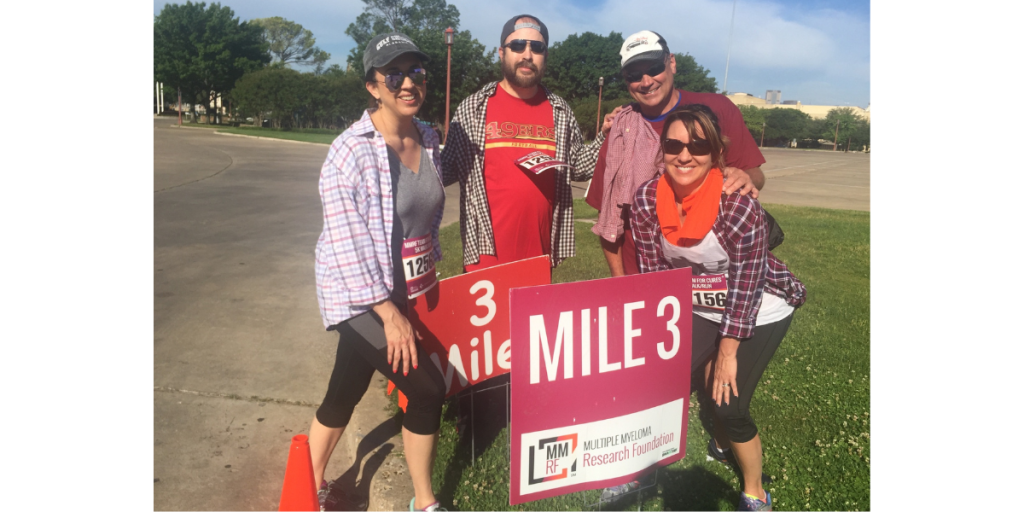
There are so many reasons that compelled our entire team to participate. First and foremost, the walk/run is a fantastic way to raise funds for continued research while bringing awareness of multiple myeloma to those who aren’t that familiar with the disease. Personally, it means so much to me that our team comes together to honor Tim, keep his memory alive, and find personal connections with the other participants.
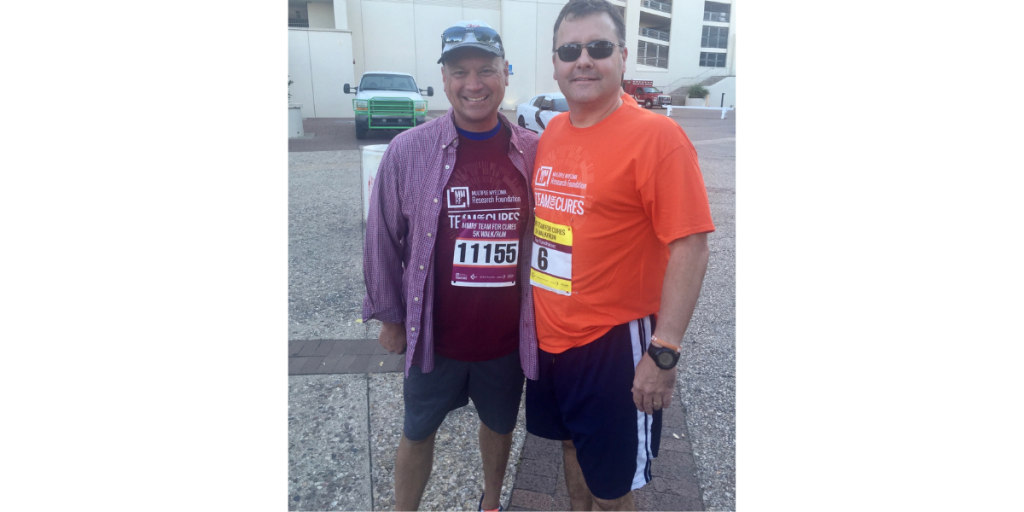
This is truly incredible to be recognized for our work in Tim’s name. I actually thought to myself, “Have we done enough!?” The answer is, of course, a resounding no. We won’t stop fighting for all the people who are battling multiple myeloma and their families who support them.
The past year since Tim passed has been tough, to be perfectly honest. What has given us strength is asking ourselves, “What would Timmy do?” The answer is always to joke and laugh, repeat his favorite movie lines, and to have margaritas or beer, chips and queso, and/or pizza (all of the above please!). It brings a smile just writing this.
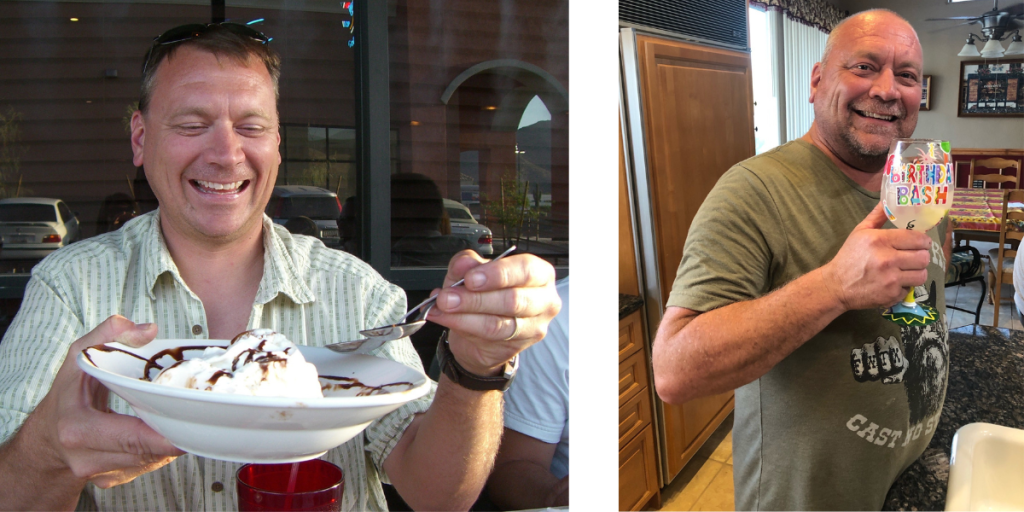
There are so many favorites, and they are all lines from Tim’s favorite movies or things he said all the time, such as “that’s what she said” and lines from Airplane, Hollywood Knights, Christmas Vacation, Blazing Saddles, and Robin Hood: Men in Tights, just to name a few, because there are so many. Tim was a positive person with a contagious laugh. As cliche as it sounds, “laughter is the best medicine” is how Tim approached life.
We are so excited to have our family together for the MMRF Walk/Run and truly appreciate the important research you do to find a cure for multiple myeloma.
The Multiple Myeloma Research Foundation is delighted to recognize Tim’s Street Rodders as the MMRF Spirit of Hope Honoree at the 2023 MMRF Team for Cures: Scottsdale Walk/Run.
This award is presented at every Walk/Run to a patient, caregiver, or family who inspires hope through their resilience, perseverance, and dedication to the MMRF and its mission. Donate to “Tim’s Street Rodders” 2023 Walk/Run fundraising page to accelerate a cure today!
Norwalk, Conn., and San Francisco, Calif, Feb. 27, 2023 – The Multiple Myeloma Research Foundation (MMRF) and the Lazarex Cancer Foundation, a non-profit organization focused on improving patient access to cancer clinical trials, announced today a partnership to support more equitable access to clinical trials for multiple myeloma cancer patients. This is the initial step of an action plan the MMRF developed to improve diversity and representation in myeloma clinical trials following its first Health Equity Summit focused on improving equity and inclusiveness in multiple myeloma clinical research.
“We at the MMRF believe that every myeloma patient should have an equal opportunity to participate in clinical trials and are deeply committed to improving representation in clinical research,” said Michael Andreini, President and CEO at the MMRF. “We are pleased to partner with the Lazarex Cancer Foundation to improve the opportunities patients have to help advance development of new therapies and potentially benefit from emerging treatment approaches.”
As part of the partnership, the MMRF contributed $100,000 to Lazarex’s PATH Program, a service designed to improve enrollment and diversity in clinical trials through patient reimbursement of out-of-pocket travel costs, community outreach, and engagement. Lazarex will support patients in MMRF-funded clinical trials, as well as help multiple myeloma patients find information and enroll in open trials, as appropriate, through the Lazarex CARE program.
Multiple myeloma is a type of blood cancer that develops in the bone marrow and can spread throughout the body. It is expected to be diagnosed in 35,000 Americans in 2023 and take the lives of 12,000. Despite advances, most patients relapse and there is still no cure. Multiple myeloma is twice as common in the Black community compared to other ethnicities and is twice as deadly in Black patients compared to white patients.
“Lazarex Cancer Foundation is honored to work alongside the MMRF to support patients with multiple myeloma with travel reimbursement and help them get to clinical trial treatments,” said Stephanie Rivera, MPH, CEO at Lazarex Cancer Foundation. “The MMRF is one of the few research organizations that clearly understands how we partner with research for successful completion of and improved diversity in cancer clinical trials. I see this as just the start of greater things to come for both organizations to benefit patients with multiple myeloma.”
Other elements of the MMRF’s partnership with the Lazarex Cancer Foundation include developing and expanding collateral, creating content for a speaker series on myeloma and supplying MMRF resources, such as the Patient Toolkit, to Lazarex Cancer Foundation activities.
About the Multiple Myeloma Research Foundation (MMRF)
The Multiple Myeloma Research Foundation (MMRF) is the largest nonprofit in the world solely focused on accelerating a cure for each and every multiple myeloma patient. We drive the development and delivery of next-generation therapies, use data to drive optimal and more personalized treatment approaches, and empower myeloma patients with information and resources to extend their lives. Central to our mission is our commitment to advancing health equity so that all myeloma patients can benefit from the scientific and clinical advances we pursue. Since our inception, the MMRF has committed over $500 million for research, opened nearly 100 clinical trials, and helped bring 15+ FDA-approved therapies to market, which have tripled the life expectancy of myeloma patients. To learn more, visit www.themmrf.org.
About Lazarex Cancer Foundation
At Lazarex Cancer Foundation we strive to improve cancer health outcomes, FDA cancer clinical trial diversity, retention, and enrollment, and patient access to care by providing assistance with clinical trial navigation, reimbursing trial related travel costs, and partnering with at-risk communities to mobilize resources. In 17 years Lazarex has assisted nearly 8,000 patients. Learn more at www.Lazarex.org. Follow us @LazarexCF.
###
Multiple Myeloma Research Foundation Media Contact:
C.J. Volpe
Director, PR and Communications
Multiple Myeloma Research Foundation (MMRF)
203.652.0453
[email protected]
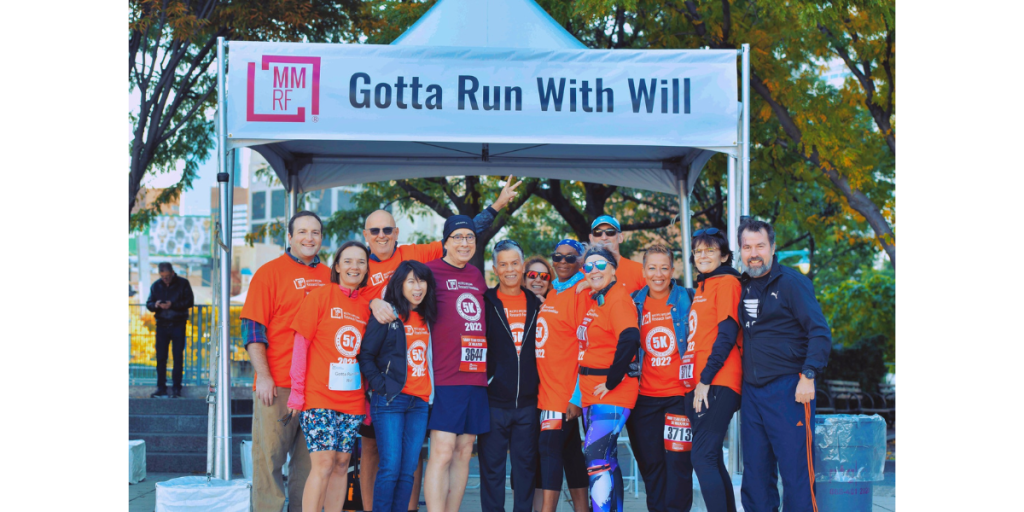
When I was diagnosed with myeloma, as I wasn’t familiar with this disease, I asked Dr. Google for help. The MMRF popped up, and its comprehensive website immediately struck me—in particular, with its movement program to help give back and support my new myeloma community. I opted to start my “Gotta Run with Will” team for the 2022 NYC MMRF Walk/Run event. My team name comes from my cable TV program on the running culture that I have been hosting since 2010 on the Manhattan Neighborhood Network.
I wanted to meet others with myeloma, and the walk/run could easily accommodate loads of folks, including those with strollers or dogs. I knew this would appeal to my friends and community.
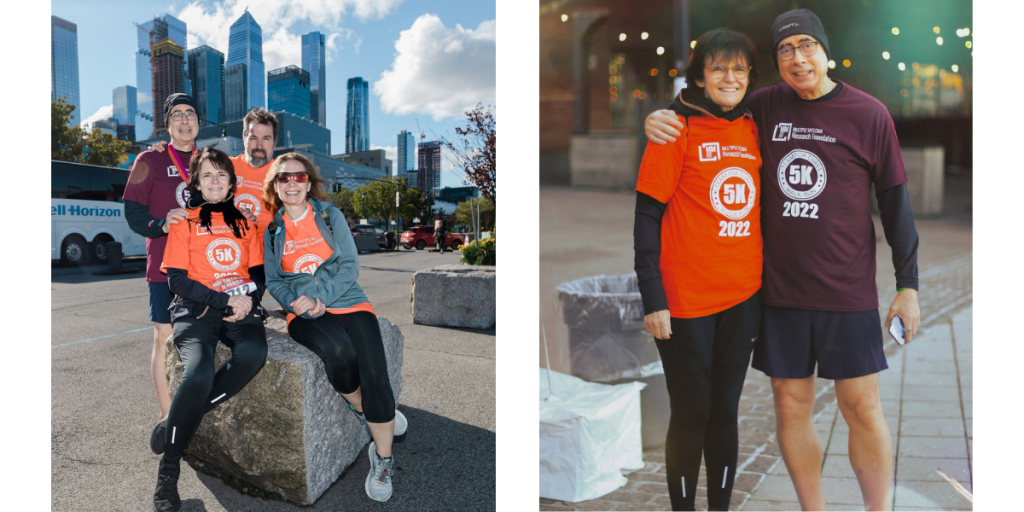
A diagnosis of myeloma not only affects me but my family and loved ones as well. Naturally, they want to display support in their way. So the MMRF does me a great honor with this award, which I can happily share with my spouse and community.
Knowledge is power. Fortunately, there are excellent videos where specialists share new treatments and their challenges. For example, a doctor said that, at times, researchers need diagnostic blood data and bone marrow samples more than the money that funds research. Because I’m tested multiple times a year, I opted to share my test results with the Myeloma researchers. I turned my worry about blood tests into valuable information to help Myeloma centers accelerate a cure.

“The best thing about the future is that it comes one day at a time.” – Abraham Lincoln. I keep busy most days as I’ve gotten very good at producing my cable shows that showcase personalities running the world and bettering the lives of others.
Having a myeloma specialist on your wellness team can make all the difference in calming your worrisome days, which for some are those upcoming days in taking blood samples. Also, patients should have their support teams meet the doctors. I was fortunate to have my two doctors, Dr. Faith Davies and Dr. Gareth Morgan from the Perlmutter Cancer Center, at the MMRF Walk/Run, where Dr. Davies reassured my wife that our quality of life could be as good as needed.
The Multiple Myeloma Research Foundation is delighted to recognize Will Sanchez as the MMRF Spirit of Hope Honoree at the 2023 MMRF Team for Cures: New York City Walk/Run. Donate to his team “Gotta Run with Will” to accelerate a cure!
This award is presented at every Walk/Run to a patient, caregiver, or family who inspires hope through their resilience, perseverance, and dedication to the MMRF and its mission.
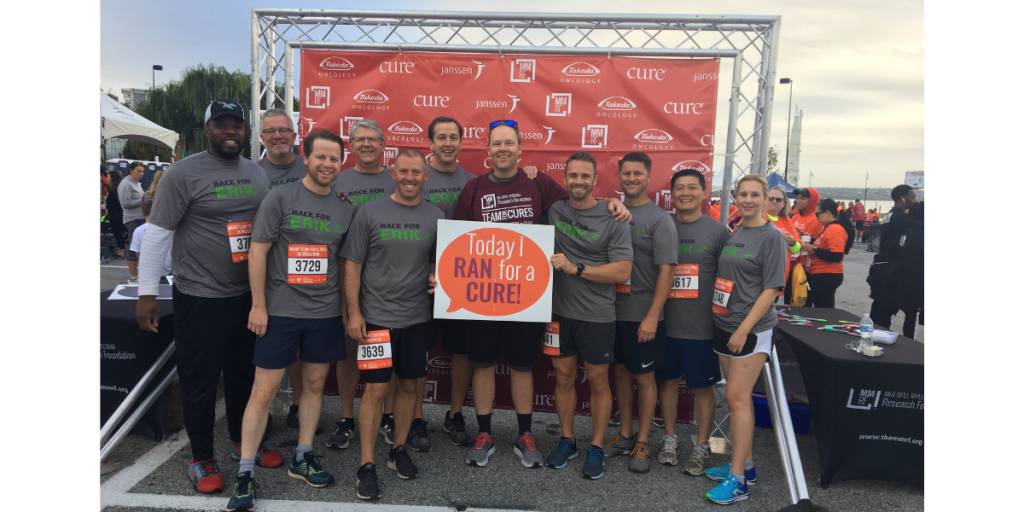
How did you get involved with the MMRF?
I was a newly diagnosed patient in 2008. Dean Assink, an alum of the school where I was principal, heard about me and shared his myeloma story. He had given money to MMRF and suggested it would be quite helpful to me in my journey. Dean became my mentor in myeloma in those early days, and the MMRF became a huge help in finding a doctor and care as I moved from Chicago to San Jose.
Why did you choose to participate in the MMRF Walk/Run?
There were many reasons to participate, such as the challenge to get more physically active, the opportunity to get friends together, a desire to be part of the larger myeloma community, and the chance to raise awareness for patients like me. However, the ultimate reason was to extend the blessings that I had been provided by myeloma patients and caregivers who had forged a path before me and to those who would come after me.
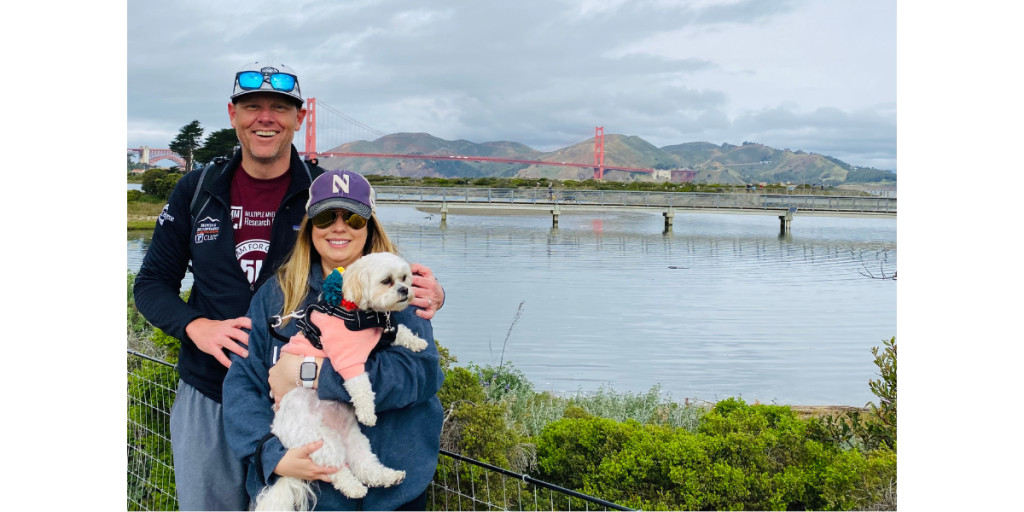
The Spirit of Hope is given to “individuals/groups who inspire hope and show extraordinary commitment to the MMRF.” What does being given the award mean to you?
Being provided this award is a huge honor, as it is an opportunity to represent the patients and caregivers who have faced this disease with determination, grit, and perseverance. After 14 years since diagnosis, 14 drugs taken, 2 transplants, and 2 CarT trials, I am a great example of hope for the next treatment to come that might lead to a cure.

How have you found perseverance in light of obstacles? Please share any stories that have given you strength.
Faith in God surely helps, but when my faith or hope has seemed to fail, I have been loved and cared for in ways that few people ever experience in life. Friends, family, professional colleagues, neighbors, doctors, nurses, and caregivers have given me the deep and authentic compassion to face this disease and the next treatment with hopeful perseverance.
Do you have a favorite mantra, quote, lyric that gives you strength?
A favorite quote of mine is “Wander into Wonder.”

Anything to add?
I’ve had the opportunity to participate in many MMRF events to accelerate a cure:
· MM4MM Iceland 2019
· MM4MM Sweden 2022
· Washington DC Walk/Run
· San Francisco Walk/Run
· 20-mile Endurance Event
I am truly blessed to represent current myeloma friends, such as
· Annette Davis
· Angela Mignea
· Jeff Boero
· Ann Connors
· Laurie Culligan
I am beyond thankful for Dr. Wolf and the UCSF team.
The Multiple Myeloma Research Foundation is delighted to recognize Erik Ellefsen as the MMRF Spirit of Hope Honoree at the 2023 MMRF Team for Cures: San Francisco Walk/Run.
This award is presented at every Walk/Run to a patient, caregiver, or family who inspires hope through their resilience, perseverance, and dedication to the MMRF and its mission. Donate to Erik Ellefsen’s 2023 Walk/Run fundraising page to accelerate a cure today!
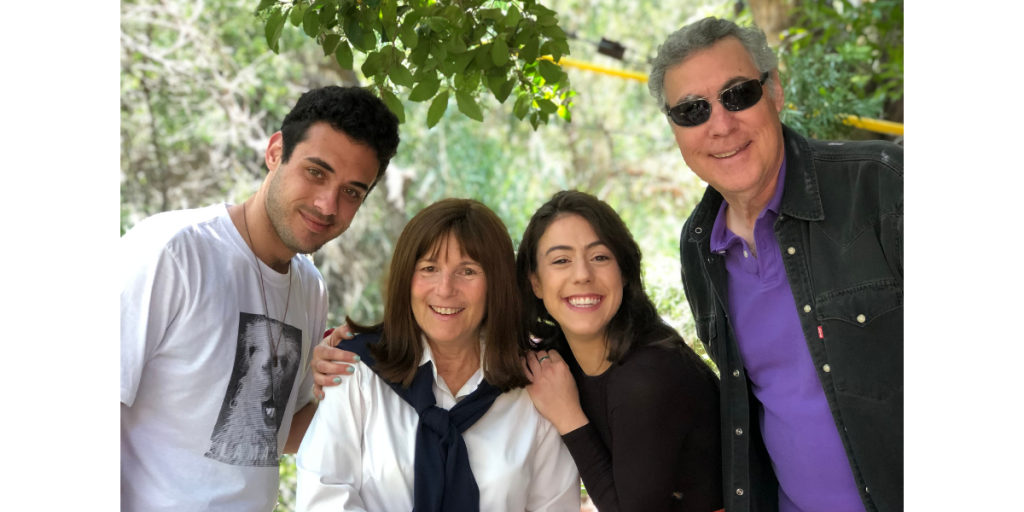
I was working at NBCUniversal when I was diagnosed with MM. Someone suggested I read Tom Brokaw’s memoir A Lucky Life Interrupted, and honestly, it was a turning point in my journey.
I tend to be overdramatic. I remember when I was diagnosed with psoriasis, I thought it was the end of the world when I realized that I had a “non-fatal disease” that would plague me for the rest of my life. So imagine how I felt when a doctor explained to me that I now had a non-curable blood cancer, and that the average person lives about 8 years (of course this is no longer the case). My positive outlook turned dark, and I thought, why me? I must be the unluckiest person in life. But then I read Tom’s book (and although I am not in the medical field), he empowered me to take responsibility for my treatment and the outcome. It gave me the strength to fight, with all my might.
After I read the book, I contacted Tom via email, as we were both members of the same company email directory. When I had business in NY, I set an appointment to meet with him in person. He turned out to be somewhat of a mentor and introduced me to Kathy Giusti, via email. In turn, Kathy was a beacon of light in introducing me to the MMRF, which has furthered my path toward self-help. So I pledged to myself that I would become an ambassador of the MMRF.
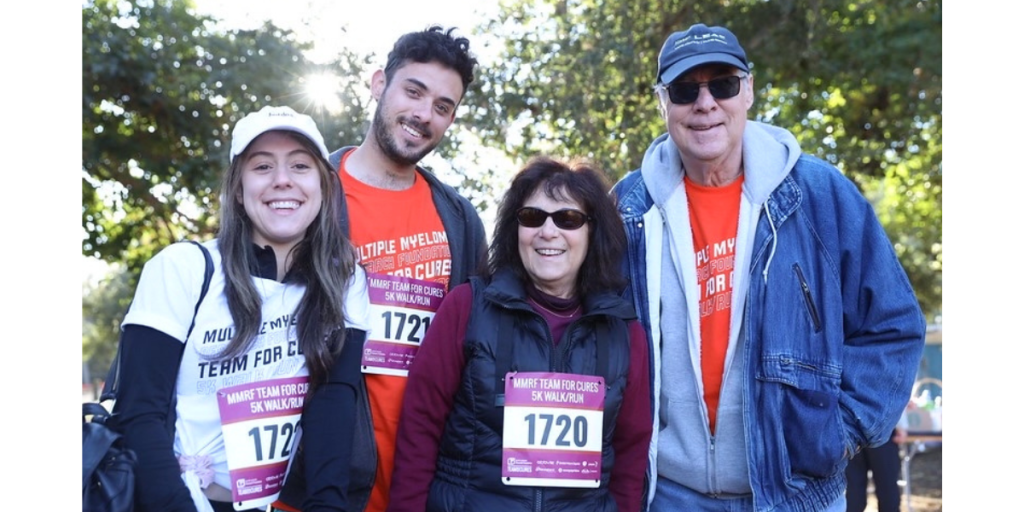
I have been approached by many blood cancer and MM charities, but the MMRF—with its single purpose to assist patients with this specific disease and its funding of research to find a cure—has given me faith that one day science will find a cure within my lifetime. The Walk/Run allows me to be a “patient activist,” not just for myself, but for others, as we actively participate together in raising money to find a cure.
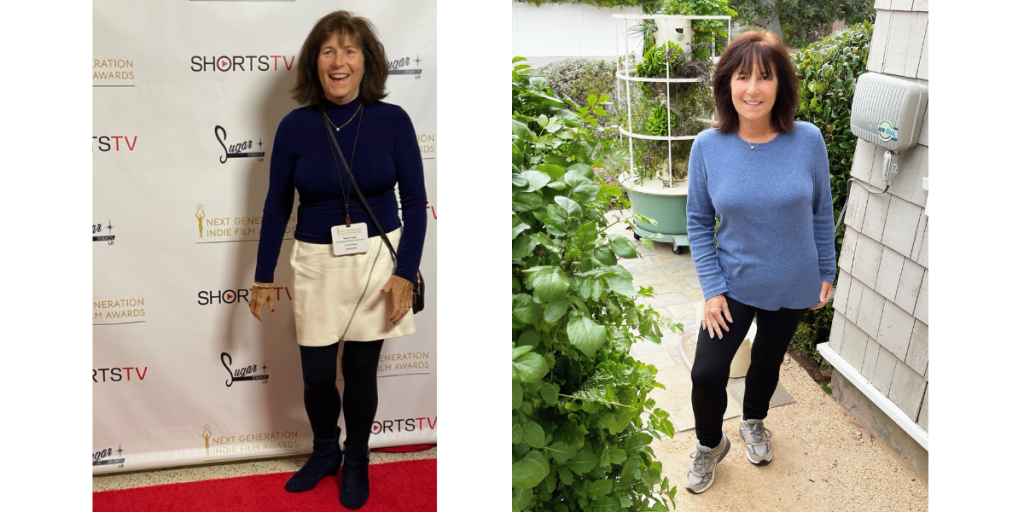
I’ve always considered myself a fighter, someone who never takes “no” for an answer, a creative thinker and negotiator able to influence others who say “it’s impossible” to at least consider the possibilities. But my advocacy has always been directed toward my own benefit or for the benefit of my family, company, or clients. Being considered for this award has allowed me to think broader and has made me realize that my work is meaningful, not just to me, but to others. In short, it demonstrates that the work of one person can make a difference for a community, and it has inspired me to not just be my own patient activist but to also be an activist for all those with MM.
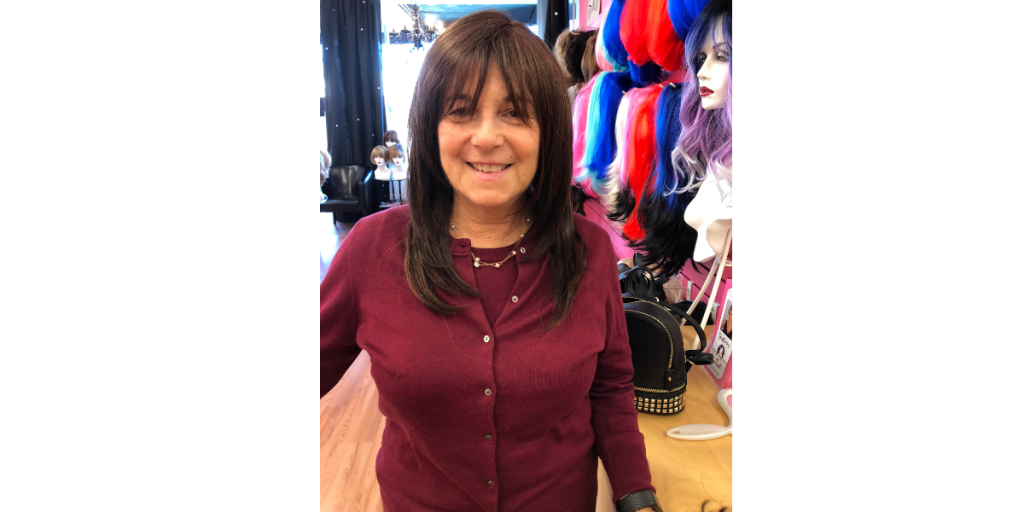
One story I can share may represent a common reaction. Like so many other cancer survivors, I FEARED losing my hair. My hair has always been one of my greatest physical assets, my trademark, a large part of who I am. So, when the City of Hope beautician entered my hospital room after my stem cell transplant, with clippers in hand, and I looked in the mirror as she started to chop off my hair in the small cold florescent- lighted bathroom, I knew she would be hacking away at my identity.
I had prepared for this moment and talked to other cancer survivors. One friend said, “Losing your hair is going to be a shocking experience. About 3 weeks after chemotherapy, you’re going to see clumps of hair fall out. You have long hair Nancy. My advice, shave your head after treatment to spare yourself of the long torture. Get an assortment of wigs and have some fun with it. It allows you to try on different versions of yourself.”
I couldn’t see myself wearing a wig and certainly couldn’t imagine having “fun” with it. But I became proactive and had a wig made for work that looked exactly like the haircut I had worn for 20 years. I made an appointment to go wig shopping with my daughter. I loved seeing her in all those different versions of herself: Goth Ali, Dolly Parton Ali, and as a pixie-cut redhead. I didn’t buy a wig that day—I just couldn’t see myself in any way other than “Normal Nancy”.
BUT while at City of Hope I visited the beauty shop and tried on a few inexpensive wigs. There was one with hair extensions attached to a baseball cap, and I became “Sporty Nancy.” Another had a shag cut (similar to Jane Fonda in the movie Klut), which my husband coined “Rock Star Nancy.” And I began to accept my situation—actually enjoyed all those personas. I guess you could say I let go of “Normal Nancy” and discovered that life is fluid. Change can be positive or negative. But if you accept change and allow it to take you on an unexpected journey, you may discover something new about yourself. It may transform you and gift you with a broader sense of yourself and the world around you.
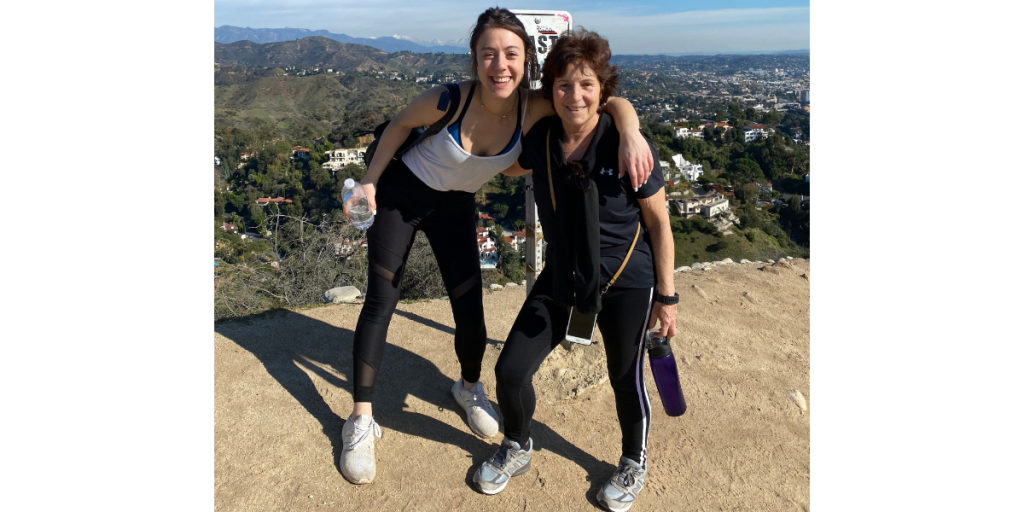
I’m a big believer that to a large extent, “We are in control of our own destiny.” That gives me strength to work every day on keeping myself healthy and being positive and proactive and collaborating with my family and Dr. Larson at UCLA Jonsson Cancer Center, to whom I am forever grateful.
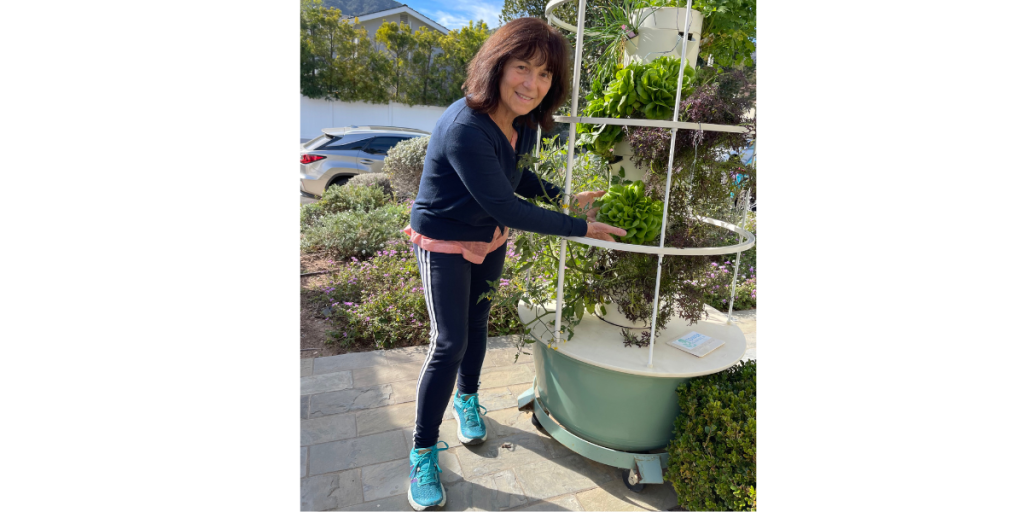
The Multiple Myeloma Research Foundation is delighted to recognize Nancy Eagle as the MMRF Spirit of Hope Honoree at the 2023 MMRF Team for Cures: Los Angeles Walk/Run.
This award is presented at every Walk/Run to a patient, caregiver, or family who inspires hope through their resilience, perseverance, and dedication to the MMRF and its mission. Donate to Nancy Eagle’s “Soaring Eagles” 2023 Walk/Run fundraising page to accelerate a cure today!